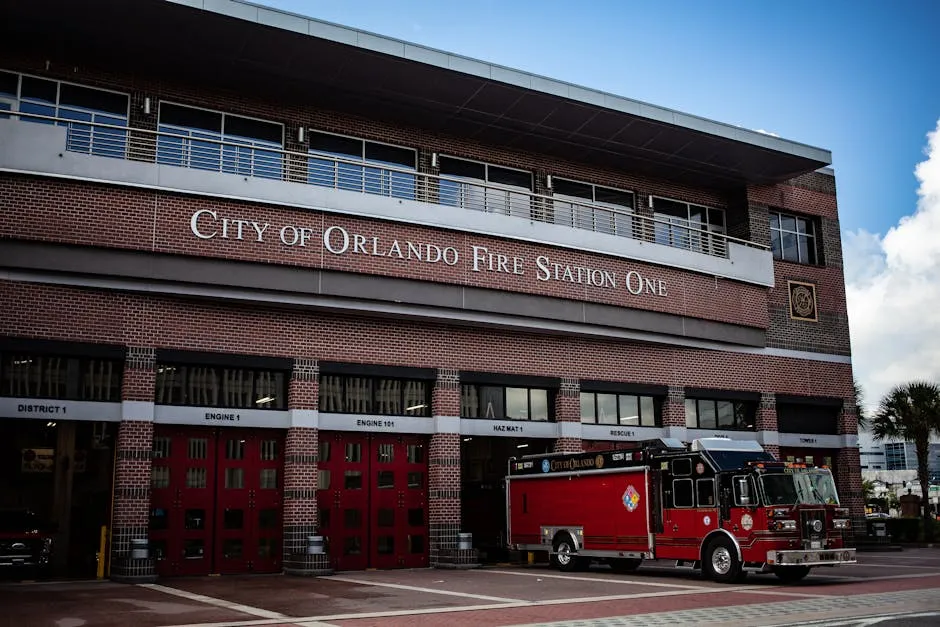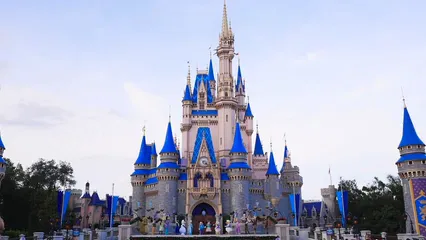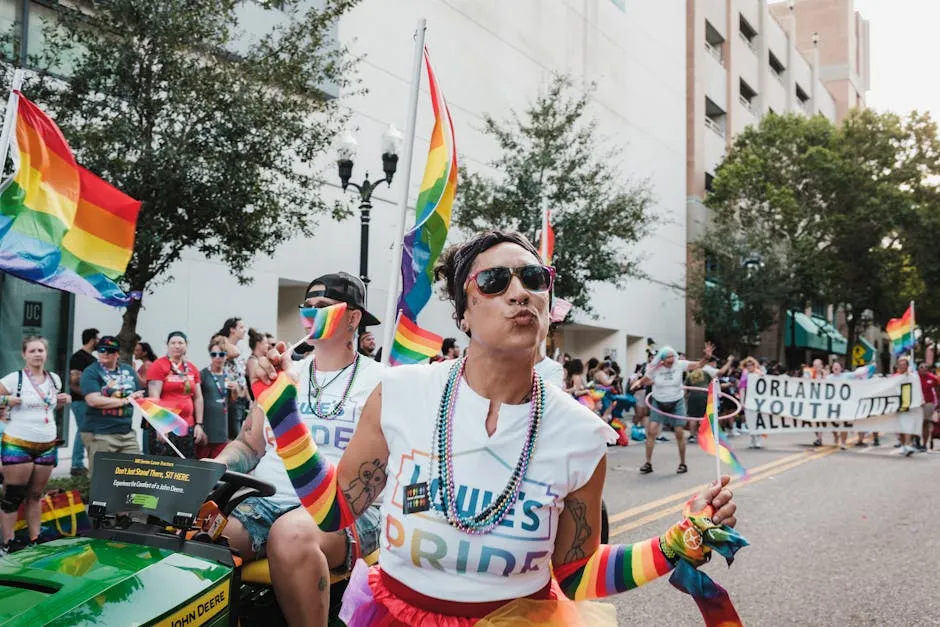Introduction
Welcome to the sunny streets of the Orlando Metropolitan Statistical Area (MSA)! Nestled in the heart of Florida, this vibrant region is known for its thrilling theme parks, diverse culture, and booming economy. With a population of over 2.6 million, Orlando is not just a tourist’s playground; it’s a lively community that offers a unique blend of experiences for residents and visitors alike.
The Orlando MSA, officially termed the Orlando-Kissimmee-Sanford MSA, plays a significant role in Florida and the broader U.S. economy. It ranks as the 22nd largest metropolitan area in the nation, showcasing a robust GDP of approximately $194.5 billion as of 2022. This region is a melting pot of cultures, drawing in people from various backgrounds, contributing to its rich tapestry of traditions and lifestyles.
In this guide, we’ll take you through the various facets of the Orlando MSA. From understanding its geographical layout to exploring demographic trends and economic highlights, you’ll gain insights into what makes this area thrive. We’ll look into the key statistics that outline its growth, the industries that drive its economy, and the cultural attractions that make it a go-to destination. Whether you’re a potential resident, a curious traveler, or a business investor, there’s something here for everyone. So, let’s jump right in!

And speaking of jumping right in, if you’re planning a visit to the theme parks, don’t forget to grab your Walt Disney World Resort Tickets. These are the golden tickets to an unforgettable adventure in the most magical place on earth!
Overview of the Orlando Metropolitan Statistical Area
Definition and Designation
A Metropolitan Statistical Area (MSA) is a unique designation used by the U.S. Office of Management and Budget (OMB). It includes a city and its surrounding suburbs, defined by high social and economic ties. For urban planners and statisticians, MSAs are crucial. They provide valuable demographic data, economic indicators, and insights into community needs, helping shape policies and infrastructure development.
Geographic Location
The Orlando-Kissimmee-Sanford MSA is located in central Florida, with geographical coordinates of 28°32′24″N and 81°22′48″W. This area encompasses four counties: Lake, Orange, Osceola, and Seminole. Each county brings its own unique flavor, contributing to the overall diversity of the region.
Here’s a quick look at the counties involved:
- Lake County: Known for its numerous lakes and outdoor recreational activities.
- Orange County: Home to Orlando, the heart of the MSA, filled with attractions and urban life.
- Osceola County: Features a blend of suburban and rural areas with growing communities.
- Seminole County: Offers a mix of residential neighborhoods and natural parks.
And let’s not forget the essentials for your outdoor adventures in these beautiful counties! Grab a Beach Towel to lounge by the lake or a Camping Tent for those starry nights under the Florida sky!
Key Statistics
The Orlando MSA covers a total area of approximately 4,012 square miles, making it one of the largest metropolitan areas in the U.S. As of the 2020 census, the population stands at 2,673,376, marking a significant increase from previous years. This growth showcases the area’s appeal as a place to live, work, and play.
The economic landscape is equally impressive. The Gross Domestic Product (GDP) for the MSA reached $194.5 billion in 2022, reflecting the robust economic activity driven by tourism, healthcare, technology, and more. With its rank of 22nd among U.S. metropolitan areas, Orlando continues to attract businesses and residents alike, making it a dynamic hub in Florida.
In summary, the Orlando Metropolitan Statistical Area is a thriving region with a rich cultural mosaic, diverse economy, and significant growth potential. As we move forward in this guide, you’ll discover more about its demographics, economy, and what makes this area truly special. Welcome to Orlando, where the magic happens!

Demographics and Population Trends
Population Growth
From 1990 to 2020, the Orlando-Kissimmee-Sanford Metropolitan Statistical Area (MSA) experienced a remarkable population surge. In 1990, the population was approximately 1.2 million. Fast forward to 2020, and that number skyrocketed to 2.673 million. This represents a staggering growth of over 118% in just three decades. Projections for 2023 suggest that the population will continue to rise, reaching around 2.818 million.
So, what’s the magic behind this growth? One word: migration. People are flocking here like moths to a flame. The warm weather, job opportunities, and family-friendly environment are major draws. Plus, the birth rate has remained steady, contributing to the expanding population. It’s a combination of newcomers and those who decide to put down roots that makes Orlando a bustling hub.
And if you’re one of those newcomers looking to explore, a Florida Travel Guide Book can be your best friend, helping you navigate this beautiful state like a pro!
Racial and Ethnic Composition
The racial and ethnic composition of the Orlando MSA reflects a beautiful blend of diversity. According to the latest census data, the area is composed of approximately 43.4% White (non-Hispanic), 32.0% Hispanic or Latino, 14.5% Black or African American (non-Hispanic), and 4.5% Asian (non-Hispanic).
This diversity is essential for community services and cultural representation. As demographics shift, local governments and organizations must adapt to meet the needs of all residents. For instance, schools are increasingly offering bilingual programs, and healthcare services are expanding to include cultural competence training. In essence, Orlando is a vibrant, multicultural community that thrives on its diversity.
Age Distribution
Age distribution in the Orlando MSA provides insights into the region’s future. As of 2020, the median age here is around 40.2 years. Breaking it down further, approximately 22% of the population is under 18, while those aged 18-64 make up about 61%. The remaining 15% are 65 and older.
What does this mean for the community? Well, with a significant portion of the population in the working-age bracket, there’s a clear demand for jobs, education, and healthcare services. Schools and universities must cater to young families, while healthcare facilities need to prepare for an aging population. The balance between these age groups is crucial for maintaining a healthy, thriving economy.

Economic Overview
Major Industries
The Orlando-Kissimmee-Sanford area is an economic powerhouse, boasting a diverse range of industries. At the top of the list is tourism. With world-famous attractions like Walt Disney World, Universal Orlando, and SeaWorld, it’s no wonder millions flock here each year. This sector alone supports hundreds of thousands of jobs.
Healthcare is another key player. The region has become a hub for medical innovation, with institutions like the Lake Nona Medical City leading the charge. This development focuses on biotechnology and medical research, creating jobs and attracting talent. For a deeper understanding of workplace violence in healthcare, you can explore healthcare workplace violence statistics in Virginia.
Understanding the dynamics of workplace violence is essential for improving safety in healthcare settings. Learn more about healthcare workplace violence statistics in Virginia.
Technology is on the rise, too. Orlando’s tech scene is booming, with companies focusing on simulation, training, and software development. This growth is essential for the local economy as it diversifies job opportunities and fosters innovation.
The aerospace industry also holds a significant place in the economy. With major employers like Lockheed Martin and Northrop Grumman, Orlando benefits from contracts related to defense and aerospace technology.
These industries not only provide jobs but also attract new residents and businesses. The local economy is thriving, and the employment landscape shows no signs of slowing down. As industries evolve, they continue to shape the future of the Orlando MSA, ensuring that the region remains dynamic and robust.

Economic Growth and GDP
The Orlando Metropolitan Statistical Area (MSA) showcases impressive economic growth and robust GDP trends. In 2022, the MSA’s GDP was approximately $194.5 billion. This figure highlights the area’s economic vitality, driven largely by tourism, healthcare, and technology industries.
When comparing Orlando’s economic performance to other major metropolitan areas in Florida, it stands out. Miami, for instance, has a GDP of around $389 billion. However, Orlando’s consistent growth, particularly in tourism, positions it as a competitive player in the state. The area’s diverse economy also outpaces Tampa’s GDP of approximately $181 billion, emphasizing Orlando’s role as a central economic hub in Florida.
On a national scale, Orlando ranks as the 22nd largest metropolitan area by GDP in the U.S. This ranking showcases its significance in the broader economic landscape. The region’s growth rate, fueled by an influx of residents and businesses, reflects a promising outlook for the future.
Job Market
The job market in the Orlando MSA is equally dynamic. Employment statistics show a declining unemployment rate, currently hovering around 4.2%. This marks a significant recovery from the peaks during the COVID-19 pandemic, where unemployment soared to nearly 13%.
Key sectors driving job growth include leisure and hospitality, healthcare, and technology. The tourism industry remains a powerhouse, providing countless jobs to the local workforce. Furthermore, the Lake Nona Medical City has emerged as a critical player in healthcare innovation, creating high-skilled positions.
However, the pandemic had a lasting impact on employment trends. Many businesses shifted to remote work, leading to changes in job availability. As the economy rebounds, sectors that adapted quickly, like technology, are seeing accelerated growth, while traditional industries are gradually recovering.

Education and Institutions
Higher Education
Higher education in the Orlando MSA is anchored by the University of Central Florida (UCF), the second-largest public university in the U.S. UCF plays a crucial role in workforce development, offering diverse programs that align with local industry needs. Known for its research in engineering, optics, and hospitality management, UCF is not just an educational institution but a catalyst for innovation.
Community colleges and vocational training institutions also contribute significantly to workforce development. Places like Valencia College provide alternative pathways for students, focusing on practical skills that meet market demands. This collaboration between higher education and local industries ensures a steady supply of qualified professionals.
K-12 Education
The K-12 education system in the Orlando area is primarily managed by several major school districts, including Orange County Public Schools and Seminole County Public Schools. These districts serve a diverse student population, reflecting the region’s multicultural makeup.
Despite achievements, challenges persist. Schools face overcrowding and funding issues, impacting educational quality. However, initiatives aimed at improving STEM education and bilingual programs are gaining traction, addressing the needs of a changing demographic landscape. The commitment to educational excellence in Orlando is evident, as educators strive to overcome obstacles and foster a bright future for students.

In conclusion, the education sector in the Orlando MSA is vital for sustaining economic growth. By focusing on both higher education and K-12 systems, the region is poised to cultivate a skilled workforce ready to meet the demands of an evolving job market.
Transportation Infrastructure
Major Transportation Hubs
When it comes to getting around the Orlando Metropolitan Statistical Area (MSA), transportation hubs play a crucial role. Leading the pack is the Orlando International Airport (MCO). This bustling airport is not just a gateway to the world; it’s a major hub for both domestic and international flights. With over 50 million passengers passing through each year, it’s safe to say MCO is a busy bee.
Then there’s Orlando Sanford International Airport (SFB), a smaller but equally important player. Often favored by budget airlines, SFB offers a more laid-back travel experience. It’s an excellent choice for those looking to avoid the crowds at MCO.
Now, let’s hit the road! Major highways like Interstate 4 (I-4) and Florida’s Turnpike connect Orlando to other parts of Florida and beyond. I-4 runs directly through the heart of Orlando, linking popular destinations like Tampa and Daytona Beach. It’s the highway of choice for both tourists and locals. Meanwhile, Florida’s Turnpike provides a scenic route that bypasses the urban hustle, making it ideal for longer journeys. These highways ensure that residents and visitors can navigate the region with ease, whether they’re commuting to work or heading to a theme park.

Public Transportation
Orlando’s public transportation options have made strides in recent years. LYNX, the local bus service, operates a comprehensive network of routes across Orange, Osceola, and Seminole counties. With over 60 routes, it’s a reliable choice for those looking to explore the city without the hassle of parking.
Then there’s SunRail, the commuter rail system that connects the MSA with a convenient route from Poinciana to DeBary. Recent expansions have added four new stations, including the lively Church Street Station, which now serves as a hub for urban nightlife.
These improvements in public transit not only enhance mobility but also promote environmental sustainability. The growth of public transportation infrastructure is a testament to Orlando’s commitment to making the city accessible and eco-friendly.

Culture and Lifestyle
Attractions and Entertainment
Orlando is synonymous with entertainment, drawing millions of visitors annually. The crown jewel? Walt Disney World, a magical kingdom where dreams come true. With its four theme parks, two water parks, and over 25 themed hotels, it’s a destination that promises endless fun for families and thrill-seekers alike.
Next up, we have Universal Studios. Here, guests can immerse themselves in the world of movies, from Harry Potter to Jurassic Park. Don’t forget SeaWorld Orlando! This aquatic wonderland offers thrilling rides and captivating marine exhibits that educate and entertain.
But Orlando isn’t just about theme parks. The vibrant arts scene flourishes with theaters, art galleries, and museums. Events such as the Orlando Fringe Festival and Florida Film Festival showcase local talent and creativity. It’s a city where culture and entertainment collide, offering something for everyone.

Community and Diversity
The cultural diversity in the Orlando area is a beautiful tapestry woven from various backgrounds. Neighborhoods like Orlando’s Chinatown showcase this rich blend, featuring Asian markets, restaurants, and cultural events.
Community events celebrate this diversity, fostering cultural awareness and engagement. Festivals like the Orlando International Fringe Theatre Festival invite everyone to join in on the fun, encouraging participation from all walks of life.
This vibrant mix of cultures makes Orlando not just a place to live, but a community that thrives on its differences. From food festivals to cultural showcases, there’s always something happening that brings residents together. In Orlando, every day is an opportunity to celebrate the unique backgrounds that make this city special.

Challenges and Future Outlook
Urban Development
Orlando’s rapid growth brings urban sprawl, which is like an overzealous gardener letting the weeds take over. As the metropolitan area expands, housing affordability becomes a pressing issue. Newcomers are eager to settle down, but rising prices make it tough for many residents. Imagine trying to buy a home, only to find that your savings resemble a small pile of pennies!
Infrastructure struggles to keep pace with this growth. Roads, public transportation, and utility systems are feeling the heat. Congestion is a daily reality, and residents often find themselves stuck in traffic, contemplating life choices—or maybe just their next cup of coffee.

In response, local authorities are rolling out initiatives aimed at sustainable development. These plans prioritize environmental conservation while addressing the housing crisis. For instance, mixed-use developments are sprouting up, blending residential, commercial, and recreational spaces. These “live, work, play” environments not only reduce the need for long commutes but also foster a sense of community.
Moreover, conservation efforts are on the rise. The region is known for its enchanting natural landscapes, and preserving these areas is crucial. Programs focused on enhancing green spaces and protecting wildlife habitats are gaining momentum, allowing residents to enjoy Orlando’s beauty without sacrificing their future.
Economic and Social Challenges
Despite its allure, Orlando faces economic and social challenges. Homelessness is a growing concern, with many individuals struggling to find stable housing. It’s a stark contrast to the glimmering resorts and theme parks that draw tourists.
Healthcare access is another pressing issue. While the area boasts outstanding medical facilities, not everyone can access them. Disparities exist, particularly in low-income neighborhoods. The irony? A city known for its hospitality sometimes overlooks its most vulnerable residents.
Educational disparities also cast a shadow over the community. Schools in affluent areas often receive more funding than those in economically disadvantaged neighborhoods. This inequity affects students’ futures and perpetuates the cycle of poverty.

Yet, hope shines through community programs aimed at addressing these challenges. Organizations are stepping up, providing resources for the homeless, offering healthcare services to those in need, and advocating for equitable education. Local leaders and residents alike are working together to create solutions that uplift the community.
In conclusion, while the Orlando Metropolitan Statistical Area grapples with notable challenges, the collaborative spirit of its residents and leaders fuels a brighter future. By focusing on sustainable development, addressing social issues, and fostering community programs, Orlando can continue to thrive while ensuring that no resident is left behind.
Conclusion
In summary, the Orlando Metropolitan Statistical Area is a dynamic region with immense potential. While it grapples with urban development challenges and social issues, the community’s resilience shines through. The blend of diverse cultures, thriving industries, and abundant attractions makes Orlando a unique place to live and visit.
As the area continues to grow and evolve, it remains a vital player in Florida and the broader U.S. economy. The robust GDP, diverse job market, and educational institutions contribute to its significance. Whether you’re planning a visit to its world-famous theme parks or considering a move to this vibrant community, Orlando welcomes you with open arms. And don’t forget to pack your Sunscreen Lotion and grab an Portable Phone Charger to keep your devices charged while you explore!
FAQs
What is the Orlando Metropolitan Statistical Area (MSA)?
The Orlando Metropolitan Statistical Area (MSA) is a designated region that includes the city of Orlando and its surrounding suburbs. Officially known as the Orlando-Kissimmee-Sanford MSA, it encompasses Lake, Orange, Osceola, and Seminole counties. This classification helps in understanding urban planning, resource allocation, and economic analysis in the area.
What are the largest cities in the Orlando MSA?
The principal cities within the Orlando MSA include: Orlando (the largest city), Kissimmee, Sanford. Additional notable cities are Apopka, Winter Garden, and St. Cloud, each contributing to the region’s vibrant character.
How has the population changed in recent years?
From 1990 to 2020, the Orlando MSA experienced remarkable growth. The population soared from about 1.2 million to over 2.6 million. Projections for 2023 indicate that the population could reach approximately 2.8 million. This trend showcases the area’s appeal, driven by migration and a steady birth rate.
What industries are most prominent in the Orlando area?
Orlando’s economy is diverse, with key industries including tourism, healthcare, technology, and aerospace. The tourism sector remains a powerhouse, thanks to attractions like Walt Disney World and Universal Studios. Additionally, Lake Nona Medical City is emerging as a hub for medical innovation, while the tech sector continues to flourish.
How is public transportation managed in Orlando?
Public transportation in Orlando is managed primarily through LYNX, the local bus service, and SunRail, the commuter rail system. LYNX operates a comprehensive network that connects various parts of the metropolitan area, while SunRail provides a convenient option for commuters. Recent expansions have improved access and enhanced mobility for residents and visitors alike.
Please let us know what you think about our content by leaving a comment down below!
Thank you for reading till here 🙂
All images from Pexels




